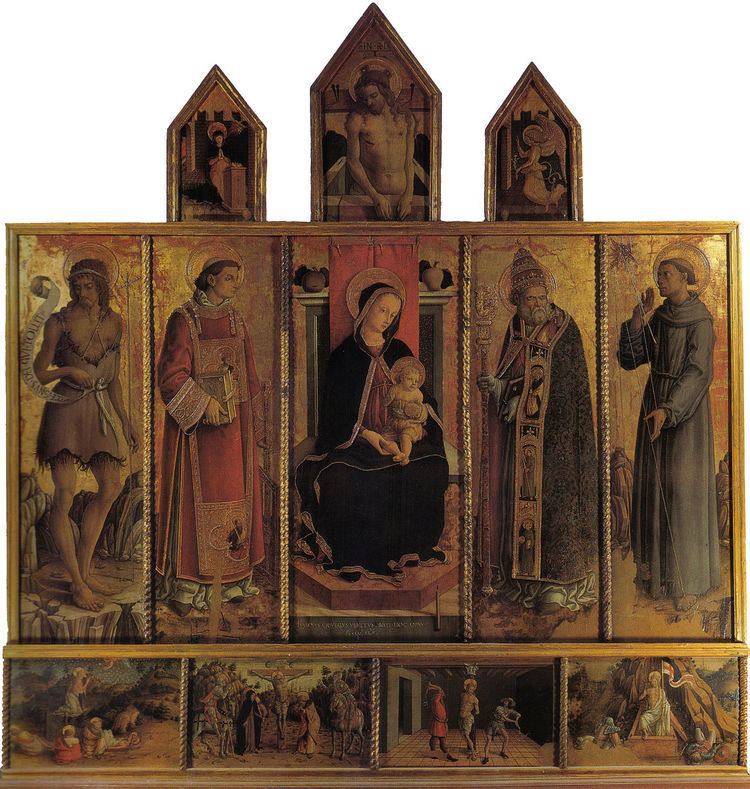 | ||
A predella is the platform or step on which an altar stands (*predel or *pretel, Langobardic for "a low wooden platform that serves as a basis in a piece of furniture"). In painting, the predella is the painting or sculpture along the frame at the bottom of an altarpiece. In later medieval and Renaissance altarpieces, where the main panel consisted of a scene with large static figures, it was normal to include a predella below with a number of small-scale narrative paintings depicting events from the life of the dedicatee, whether the Life of Christ, the Life of the Virgin or a saint. Typically there would be three to five small scenes, in a horizontal format.
They are significant in art history, as the artist had more freedom from iconographic conventions than in the main panel; they could only be seen from close up. As the main panels themselves became more dramatic, during Mannerism, predellas were no longer painted, and they are rare by the middle of the 16th century. Predella scenes are now often separated from the rest of the altarpiece in museums.
Examples of predellas include:
